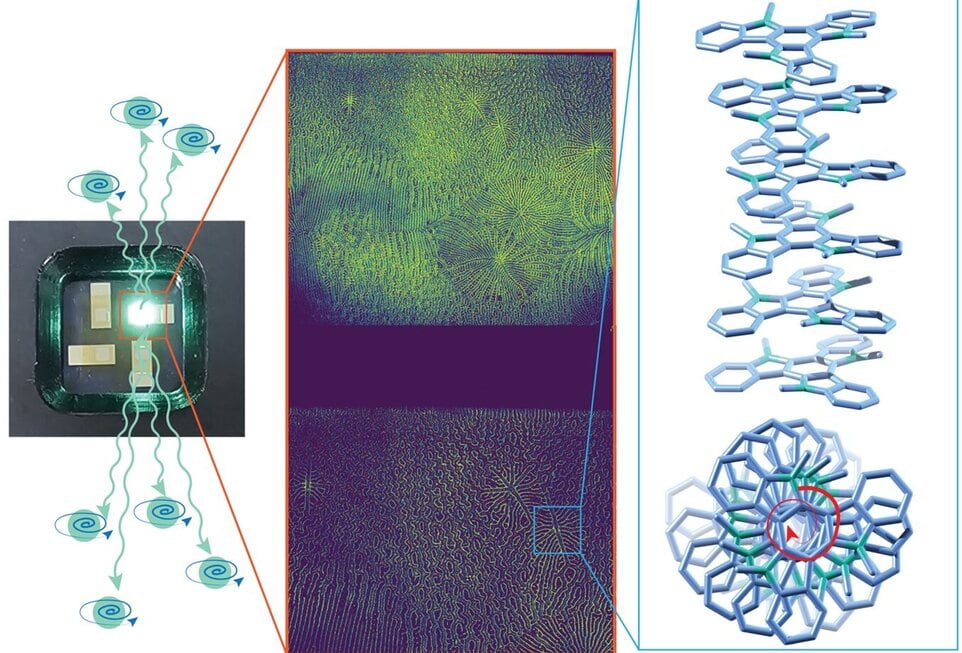A decade-old challenge has been solved to emit circularly polarized light in OLEDs, potentially eliminating external polarizers that cut brightness by up to 50%.
Researchers from the University of Cambridge and Eindhoven University of Technology announced the breakthrough, with findings published in the scientific journal Science.
This advance in so-called chiral semiconductors, using triazatruxene (TAT), could impact various fields, but specifically for OLED displays it enables light to spiral naturally.
- "By modifying OLED fabrication techniques, the researchers successfully incorporated TAT into working circularly polarised OLEDs (CP-OLEDs). These devices showed record-breaking efficiency, brightness, and polarisation levels, making them the best of their kind," announced the Eindhoven University of Technology.
Polarizers in OLED

A green OELD emitting circularly polarized photons. Photo: Seung-Je Woo, Ritu Chowdhury
OLED has huge potential
Polarizer-free OLEDs have already advanced, like Samsung’s 5000-nit OLED, which uses on-cell film (OCF) instead of an external polarizer, gaining about 33% brightness, according to Samsung.
Unlike this new breakthrough, however, Samsung's OCF relies on external films to suppress reflections – not polarized emission – so there is still a lot of potential left.
- "We've essentially reworked the standard recipe for making OLEDs like we have in our smartphones, allowing us to trap a chiral structure within a stable, non-crystallising matrix," said co-first author Rituparno Chowdhury, from Cambridge's Cavendish Laboratory. "This provides a practical way to create circularly polarised LEDs, something that has long eluded the field."
Circularly polarized OLEDs are likely still years away from commercialization, but the breakthrough can be added to the list of potential advancements for significantly improved OLED displays, alongside tandem panels, blue PHOLED, plasmonics and more.
Also read: LG Display develops 'dream' OLED with blue PHOLED
Chiral semiconductors can potentially also power next-generation computing technologies such as spintronics and quantum computing, the group said.
- Source: TU/e








